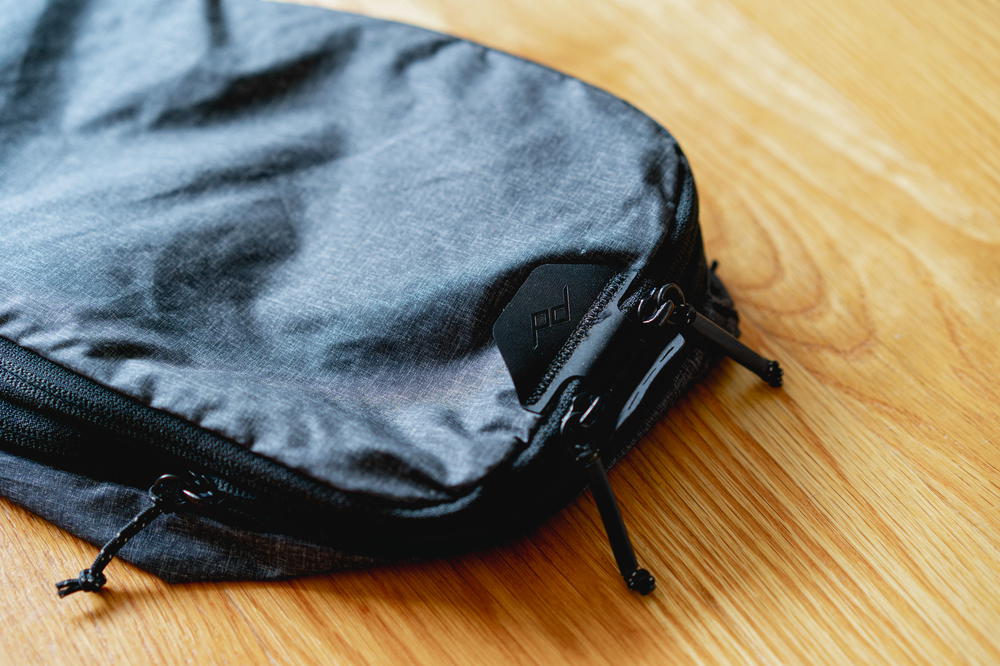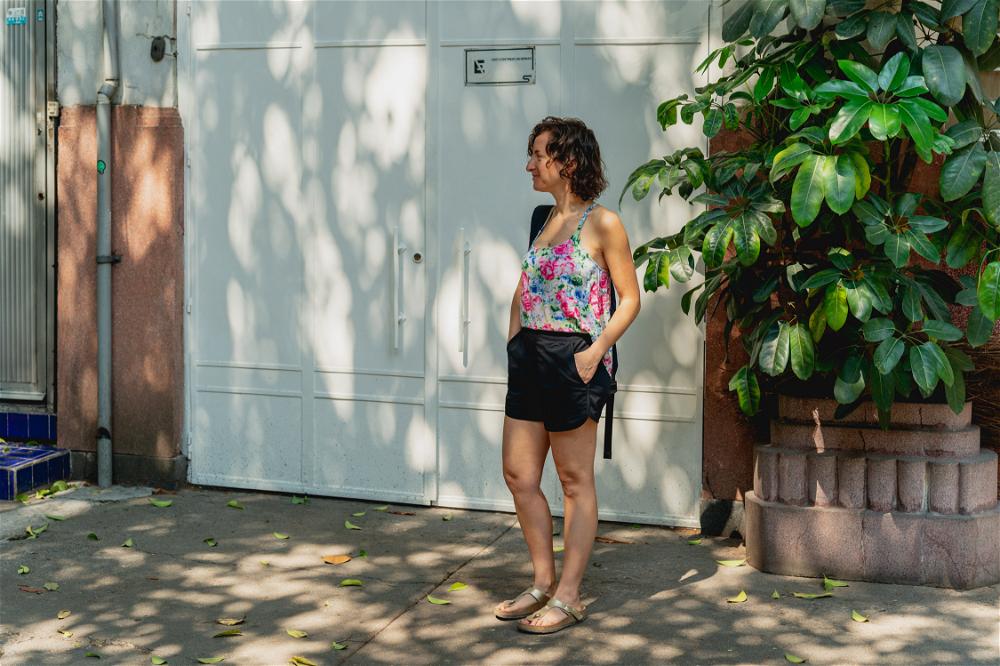Packing Cubes Review Criteria

See how we score packing cubes across detailed criteria with weighted ratings.
This article may contain affiliate links. We earn a small commissions when you purchase via those links — and it's free for you. It's only us (Becca & Dan) working on this website, so we value your support! Read our privacy policy and learn more about us.
Table of contents
- Scoring Overview
- Core functionality (14%)
- Materials & build quality (12%)
- Organization & access speed (12%)
- Packability & footprint (10%)
- Ease of use (12%)
- Durability & resilience (10%)
- Ease of maintenance & cleaning (8%)
- Versatility across trip types (10%)
- Compression effectiveness (10%)
- Shape retention & structural integrity (6%)
- Overall value for price (6%)
- Related Reviews
- Where to go next
This page details the specific criteria we use when reviewing packing cubes. Each criterion has a weight that contributes to the overall score. Learn more about how our scoring system works.
Scoring Overview
Each criterion below is weighted as a percentage of the total score. We evaluate each product on a scale of 1 to 5 for every criterion, then multiply by the weight to calculate the final rating.
Core functionality (14%)
Does it truly keep items organized and separated? I’m checking whether laundry stays separate from clean clothes. I’m evaluating if it meaningfully improves packing efficiency over loose packing. I’m testing whether it helps compress or structure luggage. If a cube doesn’t simplify packing, it has failed its only job.
Materials & build quality (12%)
This is the you know when you feel it category, but for cubes I’m digging deeper. I’m evaluating fabric durability, comparing ripstop nylon, mesh and high-tenacity poly. I’m checking zipper strength under tension, especially compression zippers that face constant stress. I’m testing seams that hold under high load. I’m assessing mesh panel durability. I’m also evaluating weight-to-strength ratio since ultralight cubes need stronger stitching. Packing cubes are frequently overstuffed, so weak zippers fail fast.
Organization & access speed (12%)
How fast can I find what I packed without exploding my bag? I’m comparing top-opening versus clamshell access. I’m evaluating visibility of contents through mesh or translucent fabrics. I’m testing whether I can access items mid-trip without unpacking the entire cube. I’m checking ease of pulling cubes in and out of luggage. I’m also assessing logical size options like small, medium, large, shoe cubes and laundry cubes. Access speed is about finding what you packed without creating chaos.
Packability & footprint (10%)
Packing cubes should increase usable space, not reduce it. I’m evaluating how well cubes stack or tile in luggage. I’m testing space efficiency relative to internal structure. I’m checking collapse-flat performance when empty. I’m assessing bulk added by seams, handles or rigid panels. I’m also comparing weight penalty between ultralight and structured cubes. The question is whether these cubes make packing easier or harder.
Ease of use (12%)
Cubes need zero learning curve. I’m testing smooth zippers under high tension. I’m checking whether they snag on clothing. I’m evaluating how easy they are to grab from a suitcase. I’m testing whether the layout is simple to understand without weird folding systems. I’m also checking if they open wide enough for fast packing. The best cubes feel intuitive from the first use.
Durability & resilience (10%)
Cubes are repeatedly stuffed beyond capacity, so durability matters. I’m evaluating resistance to overpacking stress. I’m testing longevity of compression zippers. I’m checking handle strength for drag-pulling out of suitcases. I’m assessing stiffness retention over time for structured cubes. I’m also evaluating wear resistance from laundry or toiletries stored inside. These cubes face constant abuse, so they need to hold up.
Ease of maintenance & cleaning (8%)
Travel clothing can transfer dirt, so cubes need to clean easily. I’m evaluating wipeable interiors. I’m testing ease of hand-washing. I’m checking whether mesh traps odors. I’m assessing quick drying time. I’m also evaluating stain resistance. Cleaning should be simple, not a chore.
Versatility across trip types (10%)
A great cube system works in multiple luggage setups. I’m evaluating whether it works for carry-on travel, checked bags, duffels and backpacks. I’m testing usefulness for short trips, long trips and one-bag travel. I’m checking whether it can double as drawer organizers at hotels or Airbnbs. I’m also assessing adaptability to different packing styles like rolled versus folded clothes. The question is how well it adapts to your actual travel patterns.
Compression effectiveness (10%)
This is the key differentiator for compression cubes. Many compression cubes compress poorly, so scoring must reflect that. I’m evaluating actual volume reduction achieved. I’m testing compression zipper strength and reliability. I’m checking pressure distribution to see if it avoids bulging. I’m assessing how evenly it compresses clothes. I’m testing whether compression creases clothing excessively. I’m also comparing compression performance relative to cube size. The question is whether the compression actually works or just adds bulk.
Shape retention & structural integrity (6%)
Does it do what it’s supposed to do? Structured packing cubes shouldn’t be floppy. They should maintain their shape in soft-sided luggage and hold structure after months of use. Minimal and stretchy cubes should stay flexible and compressible, not rigid. I’m evaluating whether the cube performs according to its design intent. If it claims to add organization through rigidity, it needs to stay rigid. If it’s designed to be lightweight and flexible, it shouldn’t feel stiff or bulky. The question is whether the cube delivers on its core design promise.
Overall value for price (6%)
Where does this land on price versus what you’re actually getting? I’m evaluating durability versus performance versus price. I’m testing whether the structure comes without unnecessary weight. I’m checking balance between features and portability. Build quality, durability and warranty coverage all factor into whether it’s worth the cost.
Related Reviews
Here are our reviews of packing cubes that use these scoring criteria:
- Quince Eco Compression Packing Cubes Review: Worth the Upgrade
- Peak Design Packing Cubes Review: Why I Pack Them Every Time
Where to go next
- Return to the Review Scoring System overview
- Go to our Gear Reviews for everything that we’ve reviewed.
- Contact us or work with us.
🎒 Found the right gear?
We research and test the gear we recommend, so you can pack with confidence. If our suggestions improved your gear picks, treating us to a coffee keeps the reviews coming.
Help us test more gearYou may also like
-
![]()
UPPAbaby Minu V2 Travel Stroller Review: Worth the Price Tag?
In looking for a travel stroller, we think we found the perfect one! The UPPAbaby Minu is lightweight and folds up small for flights. Is it worth the price tag?
-
![Woman wearing the gray Small Expandable Knack Pack while walking through the empty Oculus shopping mall at the world trade center transit hub]()
Small Expandable Knack Pack: Weekend Backpack Review
How's the Small Expandable Knack Pack as a small-size expandable laptop backpack for a weekend trip? Here, I review this weekend-size unisex backpack, which fits a 13 inch laptop.
-
![]()
Bluffworks Ascender Chinos Review: Travel Pants I Can’t Live Without
The Bluffworks Ascender Chinos have been my go-to professional travel pants for many years. In this review, I cover the travel-forward features, the ways to wear them and my overall opinion.
-
![]()
25 Must-Have Travel Accessories for Long Flights
What are the best travel gadgets for long flights? Survive a long flight with these carry-on essentials and airplane travel accessories.
-
![]()
14 Best Travel Shorts for Women (All Types of Travel)
Looking for the perfect women’s shorts for travel? My list has the best women’s travel shorts with zippered pockets, phone pockets, on-trend styles and super comfort.
-
![]()
Quince Eco Compression Packing Cubes Review: Worth the Upgrade
Wow! The Quince Eco Compression Packing Cubes 6-pack might be some of the best packing cubes I've tried, and I've tried a lot of packing cubes over the years. Learn about the features that surprised me in this review.







